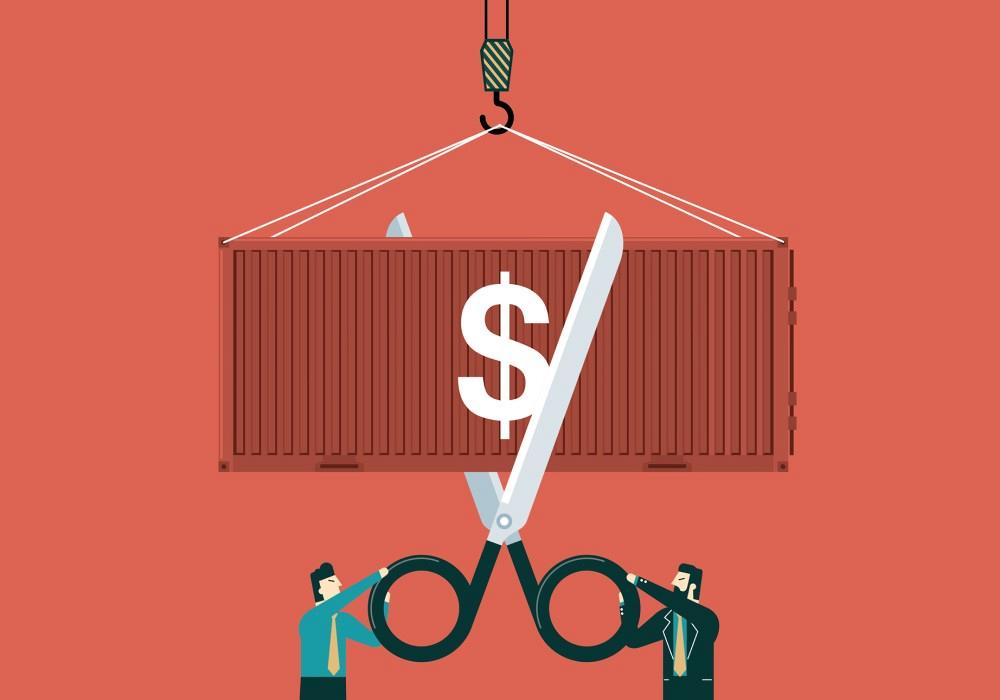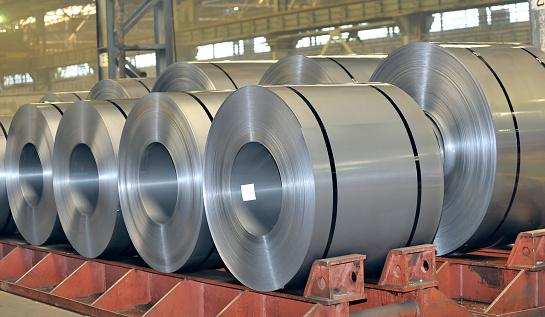Editor-in-Chief
- FMA
- The Fabricator
- FABTECH
- Canadian Metalworking
Categories
- Additive Manufacturing
- Aluminum Welding
- Arc Welding
- Assembly and Joining
- Automation and Robotics
- Bending and Forming
- Consumables
- Cutting and Weld Prep
- Electric Vehicles
- En Español
- Finishing
- Hydroforming
- Laser Cutting
- Laser Welding
- Machining
- Manufacturing Software
- Materials Handling
- Metals/Materials
- Oxyfuel Cutting
- Plasma Cutting
- Power Tools
- Punching and Other Holemaking
- Roll Forming
- Safety
- Sawing
- Shearing
- Shop Management
- Testing and Measuring
- Tube and Pipe Fabrication
- Tube and Pipe Production
- Waterjet Cutting
Industry Directory
Webcasts
Podcasts
FAB 40
Advertise
Subscribe
Account Login
Search
Time to end the tariffs on aluminum and steel
The metals industry got their time to reset; now it’s time to boost the domestic manufacturing industry
- By Dan Davis
- April 5, 2021

Ending the Section 232 tariffs on steel and aluminum would give domestic manufacturers and metal fabricators relief from record-high steel prices. Getty Images
What goes up must come down? It’s inevitable. Unfortunately, when talking about steel prices, you can’t really rely on any natural laws to determine when prices might return to recent historic levels. That’s why the Section 232 tariffs need to go.
Right now domestic manufacturing is like a rocket that’s about to lift off. Things are hot. Nerves are on edge. Everyone is waiting. Chris Kuehl, managing director of Armada Corporate Intelligence, told attendees at the Fabricators & Manufacturers virtual Annual Meeting on March 3 that the big banks are expecting 2021 GDP growth rates of around 6.4%. Do you know how long it’s been since the economy was humming at such a level? It’s been more than 37 years since annual GDP growth surpassed 6%. (According to the World Bank, annual GDP growth for the U.S. reached 7.2% in 1984). Even growth in the 4.5% to 5% range would be a noticeable lift from the traditional rate of 2.5% GDP growth.
That rocket that’s ready to take off, however, is struggling to leave the launch pad cleanly. The rocket is being weighed down. Steel prices have reached levels not seen since 2008. The Steel Market Update (SMU) reports that its benchmark price for hot-rolled steel was $1,270/ton in early March. That beats the previous high mark of $1,070/ton set 13 years ago.
“We’re having a hard time passing on the increases,” a manufacturer told the SMU analysts.
Of course, 2008 was a different time for manufacturers. Then everyone was riding high, enjoying the drug that was an inflated real estate market. Everyone knows how that story ended.
Today, however, the U.S. economy is in recovery. After a full year of pandemic living, the country’s citizens are ready to live, work, and spend their money, both saved and incoming stimulus funds. Manufacturers need assistance to fully take advantage of the opportunities that await during what some are calling the new Roaring ’20s.
That’s why the tariffs need to end. Domestic manufacturers need relief for one of the major fixed costs for their businesses. They can’t reinvest in their companies and reward their workers if steel prices keep increasing. Industry observers suggest that these high prices won’t recede anytime soon as mill capacity goes offline at this most inopportune time and imported steel, now competitive even with the tariffs because of current high prices, can’t get to U.S. shores quickly enough.
Remember that in 2018 former President Donald Trump enacted the 10% tariffs on imported aluminum and 25% tariffs on steel in the name of national security. (Section 232 of the Trade Expansion Act of 1962 allowed for such a move.) Let’s just say that the steel industry put the last three years to good use.
New electric arc furnace (EAF) steel production capacity is coming online this year at Steel Dynamics’ new, $1.9 billion flat-rolled mill in Sinton, Texas, and Nucor’s $650 million mill in Ghent, Ky. Both are expected to add 6 million tons of steelmaking capacity per year. During his FMA virtual Annual Meeting presentation, Phil Bell, president of the Steel Manufacturers Association (SMA), Washington, D.C., said the steel industry is planning to spend more than $13 billion over the next three years to further enhance EAF steel production. (EAFs melt steel scrap to create steel products. They are looked upon as being a much more efficient way to produce steel when compared to more traditional integrated mills that rely on blast furnaces to produce hot metal typically from iron ore, limestone, and coke.) It sounds like the steel industry is ready to go.
Now it’s time to let manufacturers and metal fabricators in the U.S. make the most of the moment. President Joe Biden should remove these government-imposed steel user taxes right now.
The 6.8 million people that work for steel-consuming manufacturing companies in the U.S. would appreciate the support. If three years of tariffs was good enough to protect the future of 140,000 in the U.S. steel industry, officials in Washington, D.C., should be able to recognize what removal of the tariffs will do for the domestic manufacturing base.
subscribe now

The Fabricator is North America's leading magazine for the metal forming and fabricating industry. The magazine delivers the news, technical articles, and case histories that enable fabricators to do their jobs more efficiently. The Fabricator has served the industry since 1970.
start your free subscriptionAbout the Author

Dan Davis
2135 Point Blvd.
Elgin, IL 60123
815-227-8281
Dan Davis is editor-in-chief of The Fabricator, the industry's most widely circulated metal fabricating magazine, and its sister publications, The Tube & Pipe Journal and The Welder. He has been with the publications since April 2002.
- Stay connected from anywhere

Easily access valuable industry resources now with full access to the digital edition of The Fabricator.

Easily access valuable industry resources now with full access to the digital edition of The Welder.

Easily access valuable industry resources now with full access to the digital edition of The Tube and Pipe Journal.
- Podcasting
- Podcast:
- The Fabricator Podcast
- Published:
- 04/16/2024
- Running Time:
- 63:29
In this episode of The Fabricator Podcast, Caleb Chamberlain, co-founder and CEO of OSH Cut, discusses his company’s...
- Industry Events
16th Annual Safety Conference
- April 30 - May 1, 2024
- Elgin,
Pipe and Tube Conference
- May 21 - 22, 2024
- Omaha, NE
World-Class Roll Forming Workshop
- June 5 - 6, 2024
- Louisville, KY
Advanced Laser Application Workshop
- June 25 - 27, 2024
- Novi, MI
































